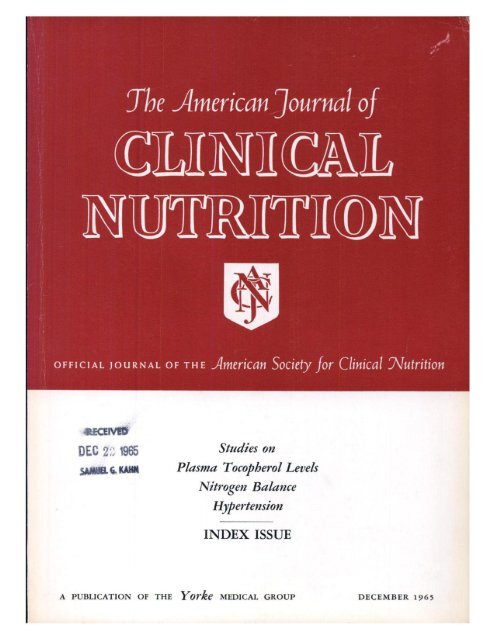在一项非随机临床试验中,单细胞转录组学揭示了母乳喂养影响新生儿免疫细胞白细胞介素信号通路。
IF 6.5
1区 医学
Q1 NUTRITION & DIETETICS
引用次数: 0
摘要
目的:本研究旨在利用单细胞转录组学方法,比较人乳喂养(HMF)和牛奶配方喂养(FF)婴儿的循环免疫细胞亚群基因表达。方法:从3-3.5月龄的健康HMF (n = 6)和FF (n = 3)婴儿中分离外周血单个核细胞(PBMCs),并纳入非随机临床试验。单细胞RNA测序用于生成PBMC图谱并评估免疫细胞亚群中的基因表达。使用scGEAToolbox对相似标记基因表达进行聚类后,对各细胞类型独立进行差异表达分析。使用在线功能富集分析程序对差异表达基因进行通路分析。结果:T淋巴细胞、B淋巴细胞、自然杀伤细胞(NK)和浆细胞样树突状细胞的相对丰度(%)相似,而FF婴儿的单核细胞比HMF婴儿高(22.6±10.7比8.3±5.6;P = 0.0314)。此外,FF婴儿的先天和适应性免疫细胞比HMF婴儿表现出更高的激活状态。我们从主要免疫细胞类型中鉴定出16个不同的细胞亚群:3个单核细胞亚群,4个NK细胞亚群,2个B细胞亚群和7个T细胞亚群。HMF和FF婴儿的每个外周先天和适应性免疫细胞亚型的转录谱不同。对主要细胞类型亚群中细胞特异性转录变化的途径富集分析显示,相对于HMF婴儿,FF婴儿的白细胞介素(IL)-4/IL-13信号通路上调。结论:这些发现表明,相对于配方奶喂养,母乳下调了与过敏性炎症和感染相关的外周免疫细胞细胞因子转录特征。本文章由计算机程序翻译,如有差异,请以英文原文为准。
Single-cell transcriptomics reveals that human milk feeding shapes neonatal immune cell interleukin signaling pathways in a nonrandomized clinical trial
Background
Several studies have indicated the benefits of human milk feeding to infants however, mechanisms behind positive health outcomes have not been investigated.
Objectives
The study aimed to characterize circulating immune cell subpopulation gene expression in human milk-fed (HMF) compared with cow milk formula-fed (FF) infants using single-cell transcriptomics.
Methods
Peripheral blood mononuclear cells (PBMCs) were isolated from healthy HMF (n = 6), and FF (n = 3) infants who were 3–3.5 mo old and enrolled in a nonrandomized clinical trial. Single-cell RNA sequencing was used to generate a PBMC atlas and evaluate gene expression in immune cell subsets. Differential expression analysis was performed on each cell type independently after clustering the cells by similar marker gene expression using the scGEAToolbox. Differentially expressed genes were subjected to pathway analyses using an online functional enrichment analysis program.
Results
The relative abundance (%) of T and B lymphocytes, natural killer (NK) cells, and plasmacytoid dendritic cells were similar, whereas monocytes were higher in FF infants than in HMF infants (22.6 ± 10.7 compared with 8.3 ± 5.6; P = 0.0314). In addition, innate and adaptive immune cells from FF infants exhibited a higher activation state compared with HMF infants. We identified 16 distinct cell subsets from the major immune cell types: 3 monocyte subsets, 4 NK subsets, 2 B cell subsets, and 7 T cell subsets. Transcriptional profiles of each peripheral innate and adaptive immune cell subtype varied between HMF and FF infants. Pathway enrichment analysis of cell-specific transcriptional changes within subsets of major cell types revealed that the interleukin (IL)-4/IL-13 signaling pathways were upregulated in FF infants relative to HMF infants.
Conclusions
These findings suggest that human milk downregulates peripheral immune cell cytokine transcriptional signatures linked to allergic inflammation and infection relative to formula feeding.
求助全文
通过发布文献求助,成功后即可免费获取论文全文。
去求助
来源期刊
CiteScore
12.40
自引率
4.20%
发文量
332
审稿时长
38 days
期刊介绍:
American Journal of Clinical Nutrition is recognized as the most highly rated peer-reviewed, primary research journal in nutrition and dietetics.It focuses on publishing the latest research on various topics in nutrition, including but not limited to obesity, vitamins and minerals, nutrition and disease, and energy metabolism.
Purpose:
The purpose of AJCN is to:
Publish original research studies relevant to human and clinical nutrition.
Consider well-controlled clinical studies describing scientific mechanisms, efficacy, and safety of dietary interventions in the context of disease prevention or health benefits.
Encourage public health and epidemiologic studies relevant to human nutrition.
Promote innovative investigations of nutritional questions employing epigenetic, genomic, proteomic, and metabolomic approaches.
Include solicited editorials, book reviews, solicited or unsolicited review articles, invited controversy position papers, and letters to the Editor related to prior AJCN articles.
Peer Review Process:
All submitted material with scientific content undergoes peer review by the Editors or their designees before acceptance for publication.

 求助内容:
求助内容: 应助结果提醒方式:
应助结果提醒方式:


